iBuyPower Element Gaming PC Review: i7-8086K and GTX 1080 Ti Inside
by Joe Shields on July 6, 2018 10:00 AM ESTUnboxing and Visual Inspection
Purchasing a boxed system from a builder like iBuyPower the device arrives at users houses fully assembled and ready to go. The only setup needed are plugging in the mouse and keyboard, internet, video cable, and power cable. Once plugged in it should be as simple as hitting the power button, walking through Windows configuration, and voilà its ready to install the games one wishes to play.
The iBuyPower PC arrived in a large box as seen above. The box is fairly nondescript outside of the iBuyPower logo and writing on four of the six sides. It is shipped in a box in a box manner to keep what is inside protected.
When opening up the box we are greeted with our first glimpse of the system in the form of an image on another box. This is more of what one would see on shelves with the system sitting securely inside. The PC sits in styrofoam shell protecting the PC inside.
After we removed the PC from its box, we are left with what is pictured above. iBuyPower uses form-fitting materials inside to hold all the components in place while in transit. The tempered glass panels each have a protective film over it to prevent any damage to the glass itself.
Overall the system is packaged well and should handle the bumps and bruises of shipping with how the unit is enclosed. It has both box in box protection and sits suspended from the box panels and edges so it should arrive at the buyer's house as pristine as it left the factory.
iBuyPower Element i7 8086K
We'll first display some stock images and then poke around on the inside. The case used in the Element chassis uses two tempered glass panels with one on the front with their logo lit up, and one on the sides showing off the internals. Overall it's a good looking case without some of the curious angles we have seen in some designs. The simple design and use of tempered glass panels gives the case a more expensive appearance as opposed to acrylic sided cases. The bare chassis structure is sourced from NZXT while glass front and sides are custom pieces tooled in-house.
iBuyPower ships the case with 3 ARC RGB LED fans giving it a nice red glow out of the box. Internally, the ASUS TUF Z370-Pro Gaming motherboard and the ADATA Spectrix D41 RAM further illuminates the interior of the case, with the latter two customizable through the Aura Sync software. In regards to airflow, there is plenty of space on the top and bottom of the front panel to let cool air through a removable dust filter. The IO panel sits up at the top of the case for easy access and there is another fan location for additional airflow as well.
Taking the glass side panel off via four thumbscrews expose a fairly roomy interior with all the components housed inside. Our initial look shows the case will fit up to ATX sized motherboards and we can see a large shroud over the power supply to cover up unsightly cables. To the right of the motherboard and video card, we can see additional shrouds for cleaning up the cables mounted to the chassis as well as two 120mm fans for intake.
Twisting the case a bit to expose more of the front fans, we can see there is room for two 120mm fans as well as being able to support two 140mm fans or 2x120/2x140mm radiators. Between the front glass panel and the fans is a removable dust filter to help keep the inside of the case clean. Up top, there is room for a 120mm/140mm fan. Below the front fan mount locations we see the louvered top of the power supply shroud, and beneath that the 3.5-inch Western Digital Caviar Blue HDD this model came equipped with. Further below that is another 3.5-inch drive bay.
Sliding the case around again we are able to see a better shot of the rear 120mm fan mount which in this case has a Corsair H60 CLC unit mounted to cool the CPU. Shown in the top of this image are two of the four studs with rubber washers for attaching the tempered glass main panel.
This image more clearly shows the shroud covering up the power supply and most of its cables as well as the two 2.5-inch mount points on the left which are removable via thumbscrews. The shroud has cutouts for cables that attach to the bottom of the motherboard as well as a cutout to route PCIe power cables as well making the interior case aesthetic clean with plenty of places to hide and route the wires.
The back of the case has ample room for cables under the shroud as well as between the side panel and motherboard tray. There are multiple tie-down points for any other cables that also helps routing and cleaning up a jumble of wires. Routing the wires properly behind the tray can prevent side panel bulge we have seen on some other cases. There is a decent size trapazoid cutout exposing the back of the motherboard socket area for ease of mounting coolers.
The back of the case shows the vented Thermaltake power supply at the bottom and just above that, seven expansions slots for additional PCIe cards are available.
Flipping the case on its head, we are now able to see another removable dust filter, this time for the bottom mounted power supply. The white strips seen running along the length of the chassis are integrated RGB LED strips. The case stands on four feet raised up a bit over an inch from the bottom of the case which should allow for ample airflow (except perhaps on the most shag of carpets).
Last but certainly not least is the IO panel located on the top front part of the case. The panel consists of a power/reset button, two USB 3.0 ports, 3.5mm headphone and microphone jacks, as well as a HDD LED to display drive activity. I would like to have seen a USB 3.1 port of some sort here. The large gap in front of the IO area is where the air is able to come into the case and from the top is where one removes the front dust filter. There is a matching gap at the front bottom of the case for intake as well.
Overall, the chassis is well put together feeling sturdy even without the glass and other side panel removed. The tempered glass side and front panels have a black border on edges cleaning up the look so only the internals are exposed and not the frame of the chassis. There is plenty of room to route cables and shrouds to hide them, and iBuyPower did a pretty good job of tidying them up at the factory. iBuyPower's red LED implementation on the included fans and the strips on the bottom of the case cannot be changed, however, the LEDs on the ASUS TUF Z370-Plus Gaming motherboard as well as the ADATA RAM can be controlled through the ASUS AURA software. The case has ample airflow capabilities and can handle the heat without issue.
In the Box
Inside the iBuyPower Box was a frosted bag which contained all the included accessories. We see an ASUS TUF Z370-Plus Gaming user guide, driver disk, some screws and zip ties. There isn't too much here, but in buying a complete system like this, there isn't much one needs to get started or extra. That said, I would like to have seen an extra SATA cable or two included to more quickly add SATA based storage.


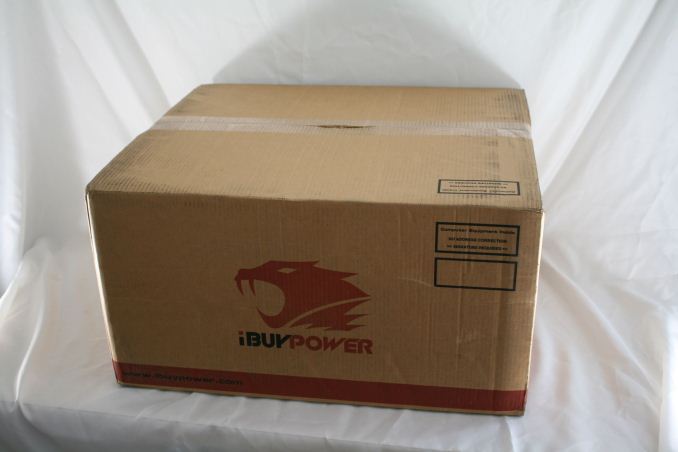
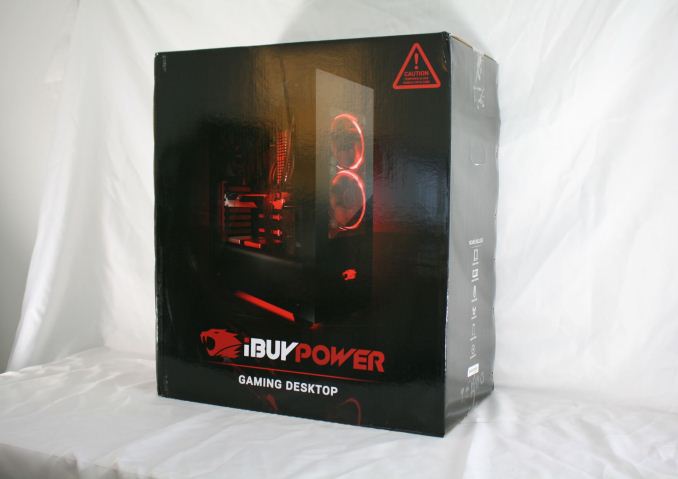

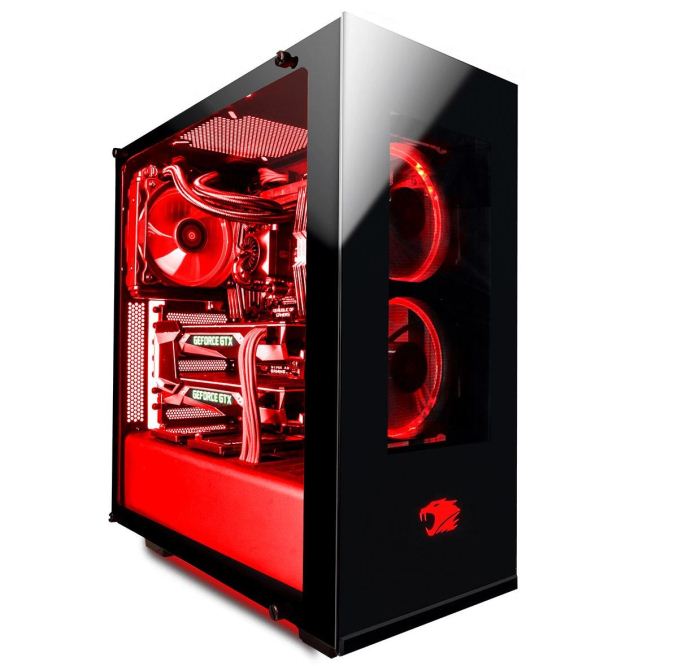
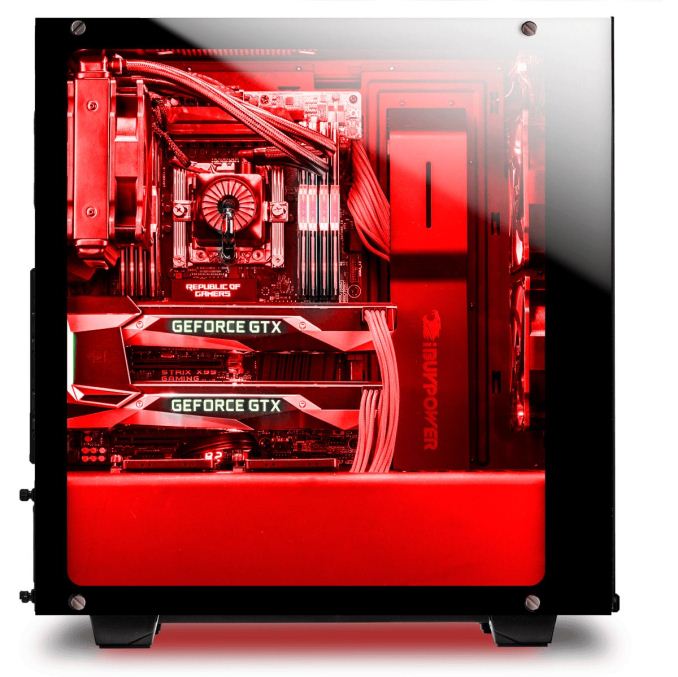
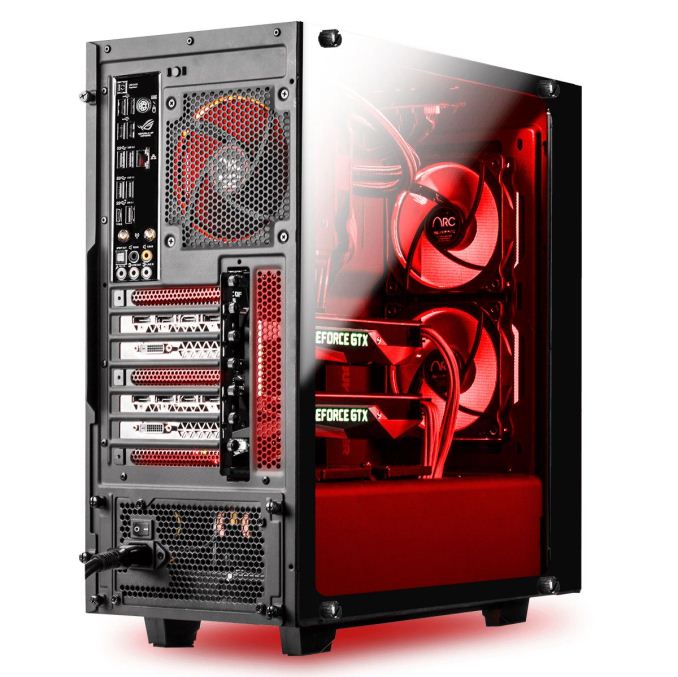
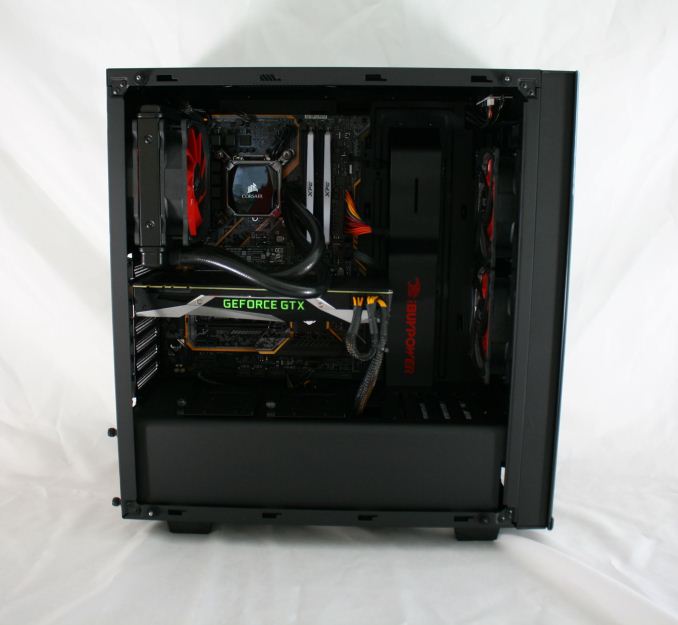
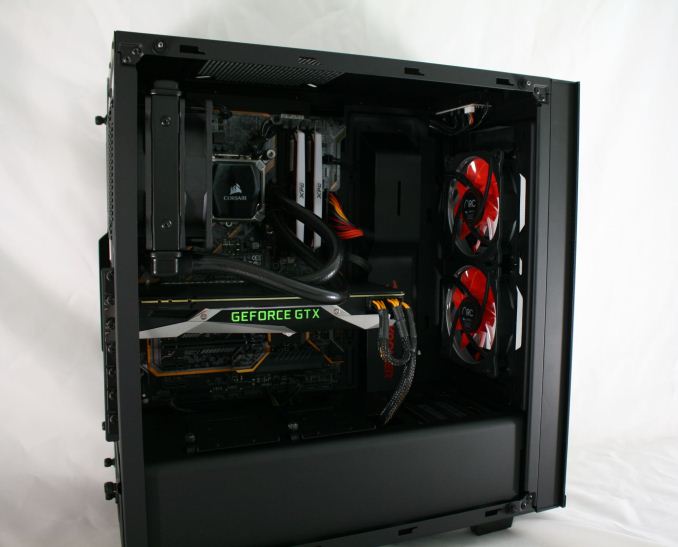
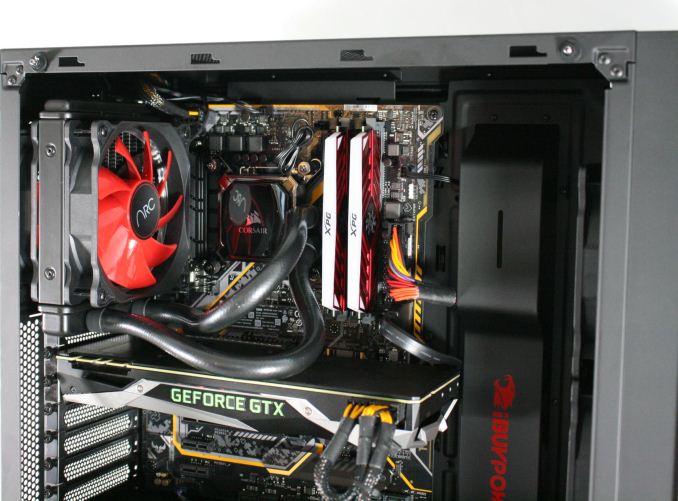
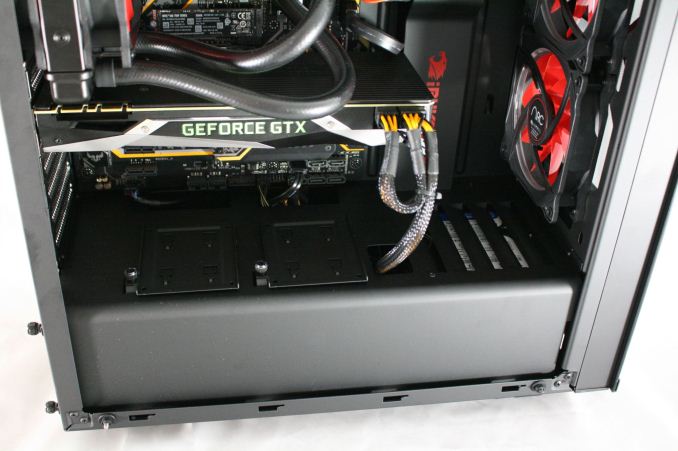

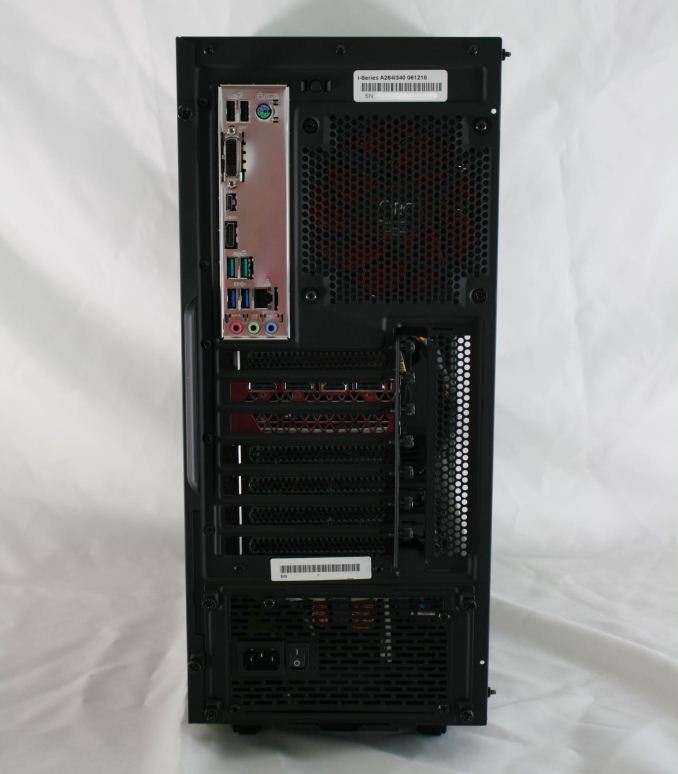
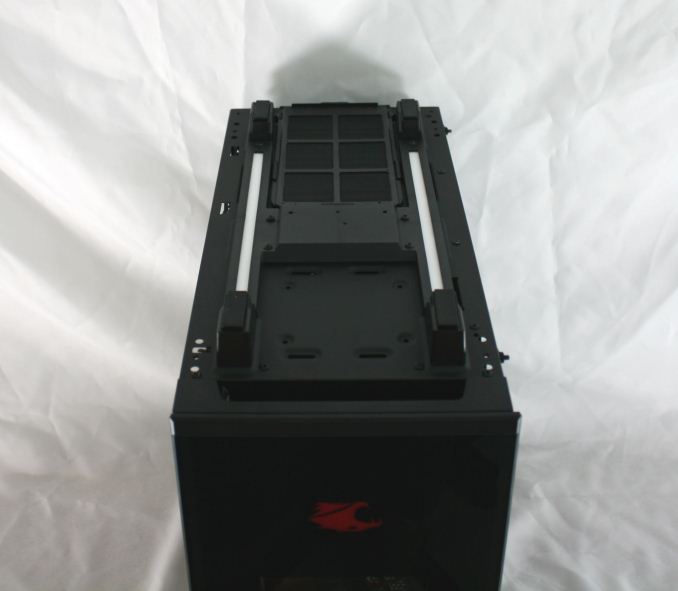
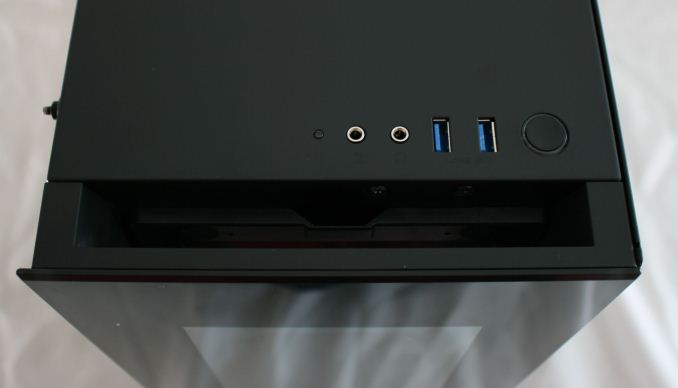
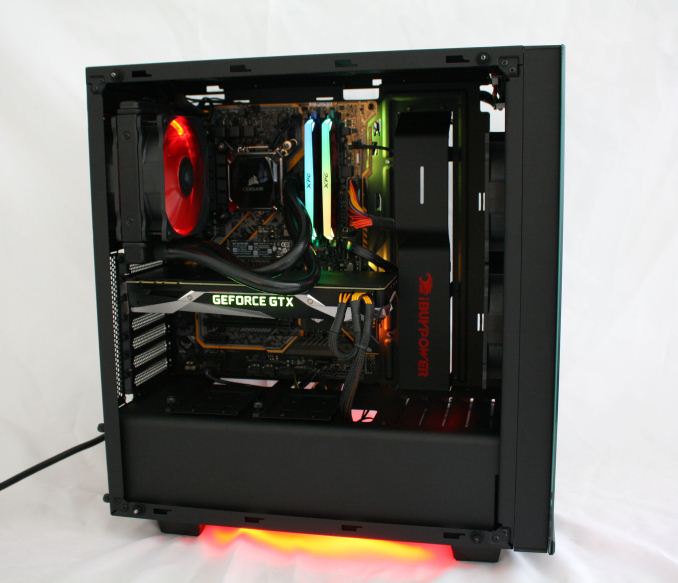






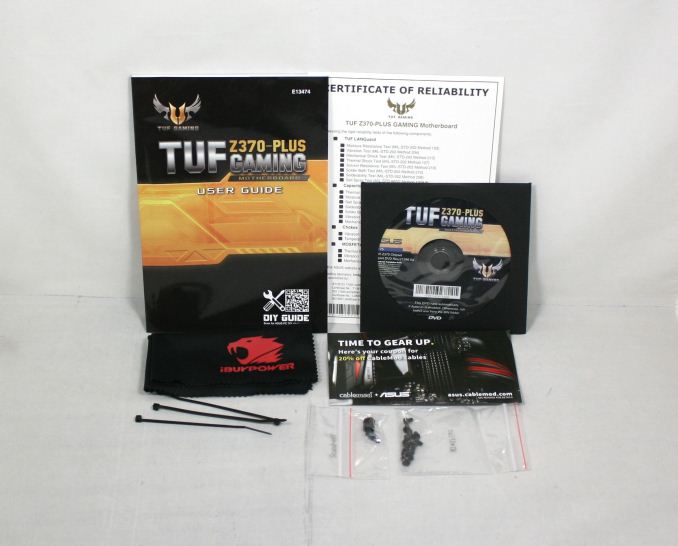








50 Comments
View All Comments
Death666Angel - Friday, July 6, 2018 - link
The use of stock photos with an SLI configuration is a bit weird.I'm not a fan of these big cases anymore. Look at all the wasted space inside. This configuration could have been done with an ITX motherboard and corresponding case that fits the radiator. Or at the very max mATX if you want to have some expandability. I'd also rather see a beefy CPU heatsink instead of the middle of the road H60. If you go CLC in such a big case, at least get a 240 / 280mm radiator. Shipping issues of an attached 1kg+ heatsink might have prevented going down that road. The only thing this large case is used for is to hide all those cables in a really messy way.
DanNeely - Friday, July 6, 2018 - link
I've got to agree about the stock photos. 1 vs 2 GPUs is just too different. If it was just a different mobo and 2 vs 4 dimms I wouldn't've cared even if I noticed (and if just the mobo I probably wouldn't).WasHopingForAnHonestReview - Friday, July 6, 2018 - link
For those of us who like expand-ability and room to work, these larger cases are a must.Death666Angel - Friday, July 6, 2018 - link
How much expandability will someone do, that buys a pre-configured PC? Ease of use, I give you that. But again, if someone buys a ready made PC, I doubt he will do a lot of work on it. At least that is my experience.I've personally used three non GPU PCIe expansion cards in the last 10 years. One soundcard, one ethernet card and one NVME SSD adapter. I've also never seen someone use more than three PCIe cards in one PC. So I still maintain that ATX cases and motherboards should be considered the niche these days, not mATX or ITX. If you need more than the motherboard offers you, mATX gives you two to three non GPU PCIe slots and if you need more than that, you are likely using some exotic things.
philehidiot - Saturday, July 7, 2018 - link
I have a double width Corsair Carbide case and, aside from the size occasionally getting in the way, it makes it loads easier to work inside and you just never even have to consider the size or number of components. Also gives loads of space to mount radiators and have large, slow spinning fans rather than smaller noisier faster ones. I can however see the use for smaller cases and why people would want them. I just can't be arsed fiddling.3ogdy - Saturday, July 7, 2018 - link
Big cases are awesome. Better airflow, more space to route the cables and keep them hidden...more space for further upgrades / additions. All this nanoscaling in everything is just crazy.imaheadcase - Wednesday, July 11, 2018 - link
Well prepare yourself, because soon upgrading wont be a think at all. All-in-ones are going to be the norm sadly. If business and gaming is what drives upgrades, then the way the games and businesses are going to reason to upgrade much anymore. The most popular PCs for business are cheap $200 hubs with built in everything. Gaming the most popular games fot years now dont require anything special.bigboxes - Sunday, July 8, 2018 - link
No, desktops are niche these days. For those of us that are enthusiasts, a larger case is easier to perform maintenance and upgrade. You're right about today's motherboards have more on-board features and quality parts. However, you may not need be as much of as enthusiast as you once were. I remember putting in all video cards, tv tuner cards, sound cards, ethernet cards, usb cards, firewire cards, etc. Whenever you want to do more than what your motherboard came with you have to use expansion cards if you want to keep it all inside the case. I also upgraded my P6T Deluxe v2 a few years ago with updated USB and SATA expansion cards. Can't do that without expansion slots.hansmuff - Monday, July 9, 2018 - link
For an 'average user' desktop, you're certainly correct. For an enthusiast, the amount of airflow alone makes a larger case worthwhile in terms of noise. I have two 140MM intakes on 'low' and another 2 140mm as exhausts, also on 'low', ML fans all of them. Coupled with a 115i I can NOT hear my system unless the graphics card goes under high load. A small case would have maybe 1/2 the airflow, MAYBE, and then the fans would have to spin much faster and be louder.DigitalFreak - Friday, July 6, 2018 - link
" The PC sits in styrofoam shell protecting the PC inside. "Wouldn't static electricity be a concern?